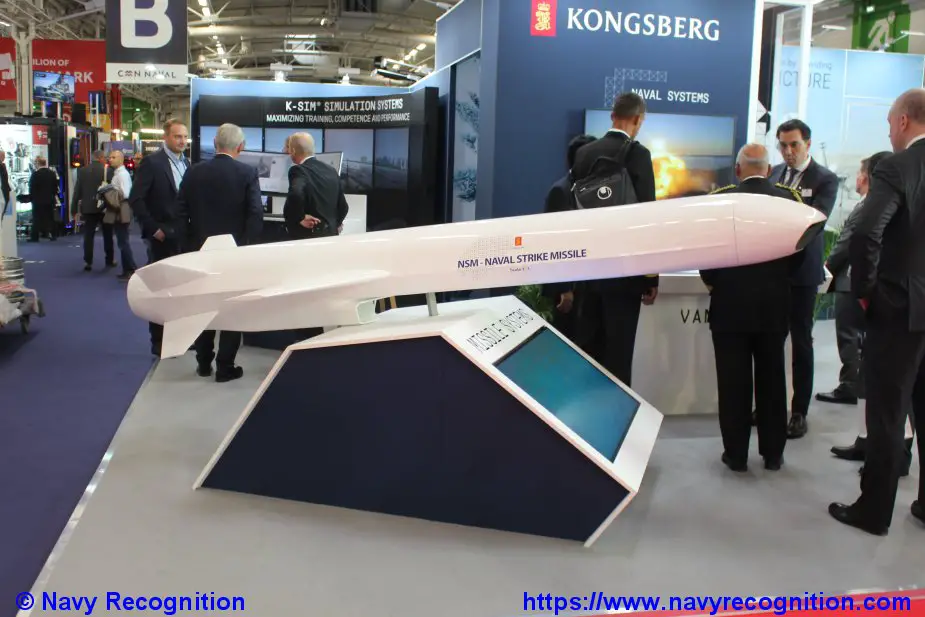According to a PR published by Kongsberg on November 23, 2022, UK and Norwegian authorities have today announced that they have agreed to further strengthen existing defense ties. The Royal Navy will receive the Naval Strike Missile (NSM), outfitted on Type 23 frigates and Type 45 destroyers, in a collaboration with the Norwegian government.
Follow Navy Recognition on Google News at this link
 Naval Strike Missile on Kongsberg's booth, Euronaval 2022. (Picture source: Navy Recognition)
Naval Strike Missile on Kongsberg's booth, Euronaval 2022. (Picture source: Navy Recognition)
The collaboration will result in more ships equipped with the highly sophisticated Naval Strike Missiles which in turn will contribute in enhancing the security in our common areas of interest.
Replacing the Harpoon surface-to-surface weapon, due to go out of service in 2023, the world-class anti-ship missile will be ready for operations onboard the first Royal Navy vessel in a little over 12 months.
About the Naval Strike Missile
The Naval Strike Missile (NSM) is an anti-ship and land-attack missile developed by the Norwegian company Kongsberg Defence & Aerospace (KDA). The missile is selected by Norway, Poland, Malaysia, Germany, the United States (as RGM-184), Japan, Romania, Canada, Australia and Spain as of 2022.
The state-of-the-art design and use of composite materials is meant to give the missile sophisticated stealth capabilities. The missile will weigh slightly more than 400 kg (880 lb) and have a range of more than 185 km (115 mi; 100 nmi).
NSM is designed for littoral waters ("brown water") as well as for open sea ("green and blue water") scenarios. The usage of a high strength titanium alloy blast/fragmentation warhead from TDW is in line with the modern lightweight design and features insensitive high-explosive. Warhead initiation is by a void-sensing Programmable Intelligent Multi-Purpose Fuze designed to optimise effect against hard targets.
The target selection technology provides NSM with a capacity for independent detection, recognition, and discrimination of targets at sea or on the coast.
This is possible by the combination of an imaging infrared (IIR) seeker and an onboard target database. NSM is able to navigate by GPS, inertial and terrain reference systems.
After being launched into the air by a solid rocket booster which is jettisoned upon burning out, the missile is propelled to its target in high subsonic speed by a turbojet sustainer engine—leaving the 125 kg multi-purpose blast/fragmentation warhead to do its work, which in case of a ship target means impacting the ship at or near the water line.



